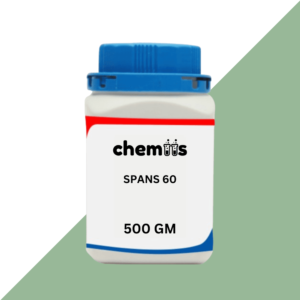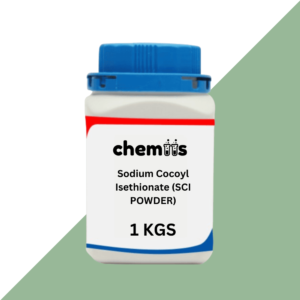Sodium Perborate is an inorganic compound commonly used in cleaning products and as a bleaching agent. It is often found in the form of a white, odorless powder or crystalline solid. Sodium Perborate is widely used in laundry detergents, toothpastes, and as an oxidizing agent in various industrial and laboratory applications. When dissolved in water, it releases hydrogen peroxide, which provides its bleaching and disinfecting properties. This makes it highly effective for stain removal, whitening, and sterilization.
Applications of Sodium Perborate
1. Laundry and Household Cleaning:
- Bleaching Agent: Sodium Perborate is commonly used in laundry detergents for its powerful bleaching and stain-removal properties. It releases hydrogen peroxide when dissolved in water, which breaks down stains, brightens fabrics, and disinfects laundry without the harshness of traditional chlorine bleach.
- Disinfection: In addition to its use in laundry, sodium perborate is employed in household cleaners for disinfecting surfaces. It is effective at removing mold, mildew, and bacteria from surfaces such as countertops, bathroom tiles, and kitchen areas.
- Oxygen Bleaching: Sodium Perborate is a preferred alternative to chlorine-based bleaches due to its gentler action on fabrics while still providing effective whitening and stain removal. It can be used in both regular laundry and in delicate fabric care.
2. Oral Hygiene:
- Teeth Whitening and Oral Care: Sodium Perborate is used in some toothpaste formulations and dental products. It works as a gentle bleaching agent that helps to remove stains from teeth and brighten the enamel. Additionally, it can help maintain oral hygiene by breaking down organic materials and controlling bad odors.
- Toothpaste Additive: In the cosmetic and dental industry, it serves as an effective ingredient in whitening toothpastes, mouthwashes, and other oral hygiene products to promote cleanliness and stain removal.
3. Industrial and Laboratory Applications:
- Oxidizing Agent in Laboratories: Sodium Perborate is used as an oxidizing agent in various chemical processes. It is utilized in analytical chemistry, particularly in tests where the controlled release of oxygen or hydrogen peroxide is required.
- Bleaching in Paper Industry: Sodium Perborate is used in the paper and textile industries as a bleaching agent to remove color from paper pulp and fabrics. It is a preferred alternative to chlorine-based bleaching agents due to its milder effect on materials.
- Synthesis of Other Chemicals: In the chemical manufacturing industry, sodium perborate can act as a precursor for producing other compounds like peracetic acid, which is used in sterilization and disinfection processes.
4. Cosmetics and Personal Care Products:
- Cosmetic Formulations: In addition to its use in oral care, sodium perborate is found in some cosmetic products, including skin care and hair care formulations, where its oxygen-releasing property helps to clean and brighten skin and hair.
- Whitening Agents in Creams and Lotions: It is occasionally included in cosmetic whitening products to brighten skin and remove impurities, acting as a mild exfoliant.
Safety and Handling of Sodium Perborate
Hazards:
- Health Hazards: Sodium Perborate can cause irritation to the skin, eyes, and respiratory system upon contact. Prolonged exposure to high concentrations can lead to more severe effects, such as chemical burns or irritation in the eyes, and respiratory distress if inhaled.
- Environmental Hazards: While sodium perborate is generally considered environmentally safer than chlorine-based bleaches, it can still be harmful to aquatic life if released in large quantities.
Precautions:
- Personal Protective Equipment (PPE):
- Gloves: Always wear protective gloves when handling sodium perborate, especially in industrial or laboratory settings, to avoid skin irritation.
- Eye Protection: Wear safety goggles or face shields to prevent contact with eyes, as sodium perborate can cause irritation and damage.
- Respiratory Protection: Wear a dust mask or respirator when handling the powder to avoid inhalation of dust particles.
- Protective Clothing: In industrial or large-scale usage, wear a lab coat or protective clothing to avoid prolonged contact with skin.
- Handling:
- Storage: Store sodium perborate in a cool, dry place, away from incompatible materials such as strong acids or reducing agents. Keep the container tightly sealed to prevent moisture exposure.
- Ventilation: Ensure proper ventilation in workspaces where sodium perborate is used to avoid inhalation of any dust or fumes. Use fume hoods or well-ventilated areas in laboratories.
- Avoid Mixing with Acids: Sodium perborate can release hydrogen peroxide when it reacts with acidic substances, which could result in a strong oxidative reaction.
First Aid Measures:
- Inhalation: If inhaled, remove the affected person to fresh air immediately. If breathing difficulties persist, seek medical attention.
- Skin Contact: In case of skin contact, wash the area with plenty of water and soap for at least 15 minutes. Remove any contaminated clothing and seek medical attention if irritation persists.
- Eye Contact: If sodium perborate comes into contact with eyes, rinse immediately with plenty of water for 15-20 minutes. Seek medical attention if irritation continues.
- Ingestion: If ingested, do not induce vomiting. Rinse the mouth with water and drink plenty of water. Seek medical attention immediately if ingestion occurs.
Disposal:
- Disposal Guidelines: Sodium perborate should be disposed of in accordance with local regulations. It should not be disposed of in water sources or environments where it could harm aquatic life. Follow appropriate chemical waste disposal procedures.








Payal Kamat (verified owner) –
Very satisfied with the product.
Shweta Dubey (verified owner) –
Well-labeled products.
Uday Thakur (verified owner) –
Very happy with the order.
Harsh Vardhan (verified owner) –
Great customer support.
Sahil Chhabra (verified owner) –
Ordering was easy.
Ananya Joshi (verified owner) –
Delivered without damage.
Priya Sharma (verified owner) –
Perfect for my needs.
Nikhil Malhotra (verified owner) –
Exactly as shown.
Ishaan Nayak (verified owner) –
On-time and well-packed.
Lokesh Rathi (verified owner) –
Efficient and reliable.